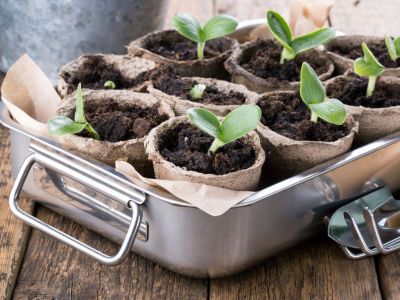Starting Plants from Seed
Some plants are best started indoors and grown for transplant and some can be sown directly outside. Most transplanted seeds grow faster and produce more quickly than those directly sown outside. For the most part, the early fall crops are suited to direct sowing, while the summer crops or those requiring a long growing season should be sown indoors. Seed starting times need to take into consideration maturity, length of growth season, variety, zone, and time of last expected frost.
When to Start Seeds
As a general rule, seeds need to be started four to six weeks before the date of the last frost. Seed starting times are calculated by taking the date of the last frost and subtracting the days until transplant. The seed packet will tell you how many weeks. The best time to start seeds is usually late March to late May. Only the southern zones are suitable for starting plants from seed in the earlier months. Give the plant enough time to germinate and grow to an appropriate transplant size.
Seed Starting Times for Different Seeds
The plants that should be started the earliest are broccoli, cabbage, cauliflower, and head lettuce. Sow seeds for these indoors 10 weeks before the date of the last frost. The warm season plants such as tomato, peppers, and eggplant require seven weeks. The best time to start seeds such as cucurbits and melons is four weeks ahead of last frost. Once your seeds have germinated and grown the appropriate amount of time, harden them off before full transplant. This means gradually acclimating the new plants to outdoor conditions for longer and longer periods of time. This reduces shock and ensures healthier transplants.
How to Sow Seeds Indoors
Use a quality seed starter mix or compost. Any container that has good drainage is appropriate, but even just a flat will work since seedlings need little root space. Sow the seeds according to the planting depth recommended by the seed packet. Some seeds recommend just a dusting of soil over the seeds, while others need more submersion. You can enhance germination by soaking larger seeds in water or wrapping them overnight in a damp paper towel. Put the containers in a warm location. Most seeds need temperatures around 60 degrees F. (16 C.) for best germination. Move the containers to a well lit area after they have germinated.
